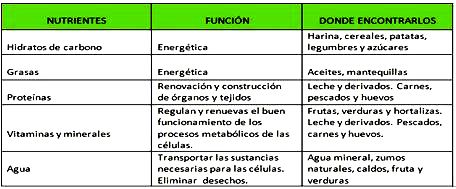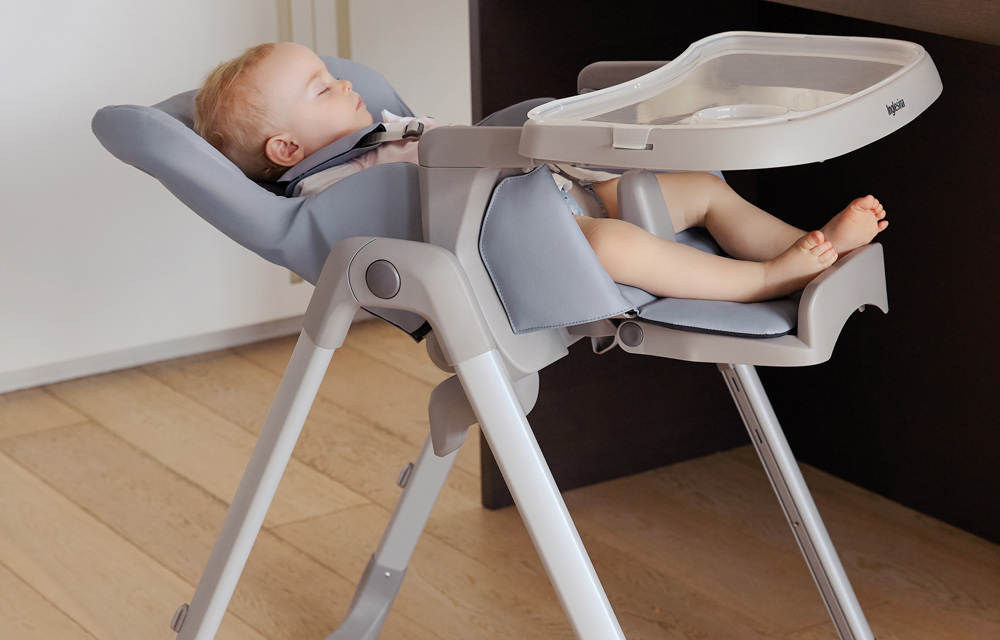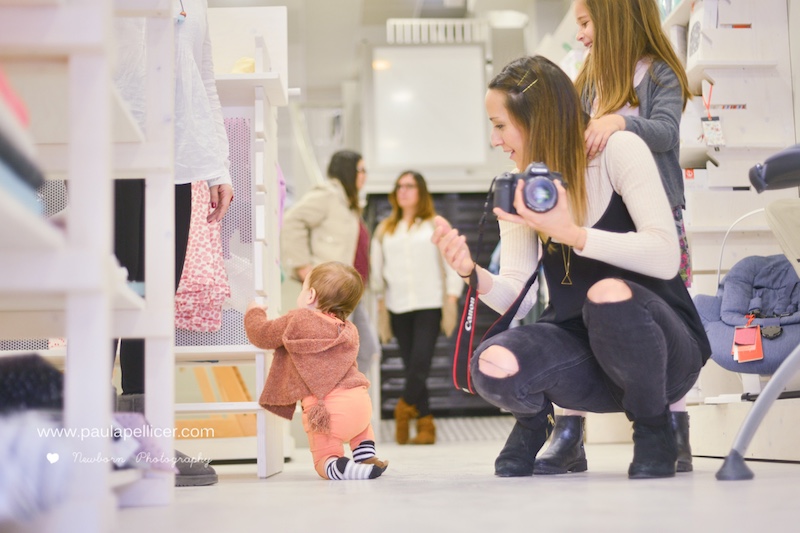During the first year of a baby's life, feeding is based on breastfeeding and, from 4 to 6 months, the offer of different foods.
Today it is recommended that the first six months of life be exclusively fed on milk and thereafter add other foods without giving up breastfeeding. For babies fed adapted milk, complementary feeding may begin earlier, around 4-5 months.
WHEN SHOULD YOU START COMPLEMENTARY FEEDING?
- When indicated by the doctor.
- When the maturation of the neuromuscular system allows swallowing semisolids.
- When there is a greater renal and gastrointestinal maturity (approximately between 4 and 6 months)
- When the baby supports his back, that is, when sitting on the floor does not fall sideways.
- When the baby shows interest in adult food.
It is IMPORTANT not to introduce food earlier than recommended because:
- It can interfere with breastfeeding.
- Excessively loads the baby's immature kidney.
- They can develop allergies to some foods.
- It may carry a risk of an appetite regulation disorder.
- You could expose the baby to additives or contaminants too soon.
Once the process of 'offering' (not introducing) food to the baby begins, it is important to go slowly, learn about its rhythms and needs. It is best to offer very small amounts at first, as the baby's stomach is very small. The best thing is to offer you foods that are concentrated in energy density and micronutrients, so that even though the feed is minimal, it will be very nutritious. The most important thing about this moment is that the baby develops a healthy relationship with feeding. So it is very important NEVER FORCE EAT.
When the time comes, your pediatrician will give you general guidelines. If you must start with fruit or cereals. We don't want to make a list because each baby is special and the one who knows him best is mom, dad and his own doctor. But we do find it interesting to leave you this table that indicates types of nutrients, the role they play and where to find them, which we are sure will help you a lot.
HOW TO PROVIDE FOOD TO THE BABY?
The best way to start this moment is to be calm and let the baby discover the textures, tastes and smells on his own. It is likely that the first few times you hardly ate any food, but this should not worry you.
Experts agree that the behavior of parents, during the period of adaptation of the baby to new foods, is essential in establishing proper habits and in preventing future problems in relation to food.
Our advice is:
- Feed the baby attending to his hunger and satiety signals.
- Feed slowly and patiently. Encourage the child to eat but do not force.
- If the child refuses some foods, he experiences different combinations of flavors and textures.
- Eliminate distractions during meals if the child loses interest easily. It is important that the child concentrates on the action of eating. You may notice that if you are distracted, you eat more, but this causes you to eat more than you need and could cause obesity in the future.
- Remember that mealtime is a period of learning and connection. It is very important to talk to the child during the meal, establishing eye contact.
- Children eat slowly and need extra time, attention, encouragement, and patience.
- They should always be supervised while eating.
We can develop a series of tips, but it is you, the parents, who are going to establish certain guidelines and rhythms over time.
If you are first-time parents, you may not be very clear about what you are going to need at the moment. For this we have created this list with several articles and the explanation of its functionality. Not all families have the same characteristics, nor the same rhythms of life, and what may be very necessary for others may even be expendable.
ITEMS TO TAKE INTO ACCOUNT
TO FEED THE BABY
1.- HIGH CHAIR:
Once you start complementary feeding, you will need a place to sit the baby to eat, leaving arms and hands free. Before choosing a highchair you must take into account several points:
- It is an item that is used many times a day so it should be comfortable. The evolutionary high chairs They allow the baby to support the feet during all stages of growth, thus keeping the back upright and making it more comfortable for the baby.
- What use are you going to give it? (travel, home)
- How many years do you want to use it? Highchairs normally last 24-36 months. The moment the child wants more freedom of movement, more independence, he begins to want to stand up in the high chair (very dangerous!). He will try to climb it or go up and down himself. If you are using a traditional high chair It is time to change it for an elevator, which will allow you to be freer and get to the table (at that age they are still high). On the other hand, if you choose a evolutionary high chair You can remove the baby adapter but continue using it because it becomes a height adjustable chair.
- Assess whether the high chair and its elements are easy to wash, since the baby ends up dirtying the space a lot.
- Did you prefer a high chair with an integrated tray that cannot be separated, with a removable tray or without a tray? It will depend on the use you want to give it. If you plan to integrate the baby into family meals, a high chair without a tray or that you can remove and put is ideal.
- Place where it will be placed and stored. If you can always have it mounted or you need something that is foldable to store it after use.
The high chair types are:
- Fixed highchairs: They are high chairs that are always used in the same place. They have a certain height. Some have a tray, others have a removable tray and there are some without a tray to share the family table. They usually have a plastic seat and are easy to clean. The useful life of this type of high chair is from 6-9 months to 36 months.
- Folding highchairs: (scissor or adjustable high chairs) It is perfect when you have space problems. They are usually reclining, with the seat down and can be easily moved because they are not very heavy. The useful life of this type of high chair is from 6-9 months to 36 months.
- Evolutionary highchairs: They are regulated in different positions so that the chair adapts to the child at its different stages of development. When it is no longer used as a high chair, they become a chair. The useful life of this type of high chair is from 0 months (with its specific adapters for each stage) until adulthood. This type of highchairs / chairs allow the baby an ergonomic position, with the back straight and the legs resting on a base so that they make an angle of 90º.
- Convertible high chair: Once the child no longer uses it as a high chair, it becomes a chair with a table of its height to play, draw, etc. The downside is that the seat is usually quite uncomfortable (too wide) to use as a high chair and the baby ends up sitting badly. They are usually very heavy and take up a lot of space.
- Travel high chair: The structure is a harness-shaped seat that attaches to a conventional chair allowing the baby to come to the table. It is a suitable solution for travel since they are very light and take up little space, but are not recommended for daily use. The useful life of this type of highchairs is from 6-9 months to 36 months
- Highchair: It consists of a strong structure that fits on the table, the child is fully integrated in family meals. The maximum weight is usually 15 kg and before placing the baby, make sure that the table will support the weight. It should not be placed on unstable tables or with tablecloths that can cause the structure to slide.
2.- ELEVATORS
If you have chosen to buy a conventional high chair before 36 months, you will have stopped using it and you will need an elevator so that the baby can reach the table. But think that your position will not be ergonomic, you will not rest your back on the backrest and your feet will be in the air, you will not be able to support them.
This position is usually not too comfortable for children of that age. If you have never had this feeling, we invite you to visit our 'Baby Experience' store where you will find a chair and a giant table and you can experience it yourself.
3.- DISHES:
The time to introduce food is almost like a game, a discovery. Therefore, it is important to let him touch the utensils, allow him to show interest in the cutlery and facilitate the handling of the plates and glasses. In order for this to be safe and comfortable, we recommend that the children's tableware:
- Be appropriate to your age (non-slip plate, learning glass, soft cutlery that does not damage the gums and if desired with striking colors and drawings)
- Be toxic free (paints, free of bisphenol A (BPA), polyvinylchloride (PVC), and phthalate)
- Easy to wash
- Be resistant, that is, it does not break easily (glass, ceramic, etc.) and it does not rust.
- Have the ends rounded and in the first months, silicone to avoid damaging your gums.
- If you use a microwave or dishwasher, the material must be prepared for that use.
You will find several tableware types:
- Plastic or melamine: Currently, companies that make baby tableware include all safety standards and their products are free of BPA, phthalates and PVC. It is important to check the labels of the products before buying them.
- Ceramics: Ceramic plates are not the most recommended for children due to their weight and ease of breaking.
- Ecological (corn, rice ...) Free of toxic substances, in addition to being beneficial for baby's health, they are biodegradable.
- Stainless steel: The surface is not porous, allowing dirt and bacteria to not filter. They do not contain dangerous chemicals.
- Wood: The natural elements make the risks of poisoning less. Generally these dishes are made of bamboo, teak, olive wood, etc. They do not contain toxins but since they are a porous material, they can store bacteria, which is not recommended for the baby's health.
4.-KITCHEN ROBOTS:
The best way to feed the baby is with food cooked at home. Sometimes it becomes difficult due to lack of time. For this there are the 'kitchen robots' that help save time because they are usually multifunctions: they steam, heat, some also grind, others beat and can even vacuum-pack.
In addition to saving time, they also serve to cook healthier. In general, cooking baby food by boiling vegetables or meats in a normal or express pot makes antioxidants and vitamins disappear by dissolving in the water. The ideal solution would be to eat them raw (which in the case of the baby is very difficult and in some cases harmful) or to steam them so that the nutrients are hardly altered.
According to experts, when the water rises to more than 100º, the 50% of the potential of the food in contact with it is lost. So the final result will depend on the time it takes to cook.
A study carried out by the REVIEW, STUDY AND POSITIONING GROUP OF THE SPANISH ASSOCIATION OF DIETITISTS-NUTRITIONISTS to prevent the loss of nutrients, summarized that the best way not to lose nutrients from food is:
- Peel and cut the food at the time of consumption
- Using short soak (wash) times
- Use cooking methods in which the food and water have little contact (steam, microwave, stir fry ...)
- Before putting the food to cook, wait until the water is fully boiling.
- Add a squirt of lemon to the cooking water (this may alter the flavor)
- Cook the vegetables al dente and cool them later.
- Take advantage of cooking water to make other foods.
So, taking all these things into account we can say that kitchen robots, in addition To help save time preparing baby food, they are an ideal solution to keep the properties of the food completely intact.
5.-SOLID TERMS / THERMAL BAG:
As we have said, the best way to feed the baby is at home. But if you need to leave the house at mealtime, the ideal solution is to be able to transport the food with a thermos or thermal bag that allows you to keep warm or cold for a certain period of hours.
So far our recommendations for useful products when starting the complementary feeding of the baby. If you have any questions, do not hesitate to contact us through this blog or any of our social networks (Facebook, Twitter or Instagram).




